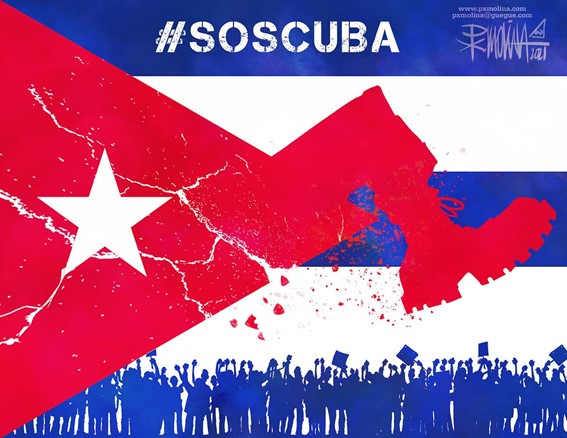Cuban Historian Rafael Rojas on the Recent Protests

Those who took to the streets are victims of the economic, health and political crisis in Cuba, caused by the reinforcement of US sanctions, but also by the ineffectiveness and authoritarianism of the Cuban Government.
By Rafael Rojas (Confidencial)
HAVANA TIMES – Last year, with colleague Vanni Pettinà from Colmex, we coordinated a volume of compact analyzes on the main social outbreaks in Latin America and the Caribbean, between 2017 and 2019. The book is entitled “Latin America. From the social explosion to the economic and health implosion” (only in Spanish) and addresses the cases of Venezuela and Colombia, Brazil and Argentina, Chile and Peru, Ecuador and Bolivia, Puerto Rico and Haiti.
Although at the time we compiled the volume there had not been the massive popular protests of recent days in Cuba, we did include a piece by academic Ailynn Torres Santana on the island. Torres argued that Cuban civil society is showing the emergence of a young and plural activism, articulated especially around the feminist, anti-racist, environmental, and LGTBIQ movements, as well as the groups against animal abuse.
What we have seen in Cuba supports that book. The activism of these groups, such as the San Isidro Movement and 27-N, has intensified and includes projects that pressure institutions, demanding laws in favor of greater public freedoms.
Some actions of these movements have achieved certain popular support in Havana neighborhoods. Opposition groups in cities in the interior of the island have also gained citizen support.
What took place in recent days can hardly be interpreted as an action conceived and led by the opposition, exile groups or the new civic activism. The images on Facebook and Instagram speak of mostly peaceful, spontaneous demonstrations in some thirty towns and cities.
It is true that we saw many young people in Havana, Santa Clara, Cienfuegos, Camagüey or Santiago, but we also saw a generationally diverse population in the squares of various towns on the outskirts of the capital.
The Government reacted erratically to the large-scale sudden protests.
First, some officials said that they were people who peacefully took to the streets to chant “we are not afraid”, but that the “counterrevolution” manipulated the videos. Then, after the words of President Miguel Díaz Canel, in which he opted for the narrative of the “soft coup”, they changed their version and appealed to the criminalization of the protest: the protesters became “vandals”, “delinquents” and “criminals”.
Due to the social composition of the protests and their main slogans, it is evident there is a large sector of the population with limited access to medicine and food, affected by blackouts, but also suffering from the systematic lack of public freedoms and repression.
Those who took to the streets are victims of the economic, health and political crisis in Cuba. A crisis caused by the reinforcement of United States sanctions, but also by the ineffectiveness and authoritarianism of the Cuban Government.
*First published in the Mexican publication La Razon.





